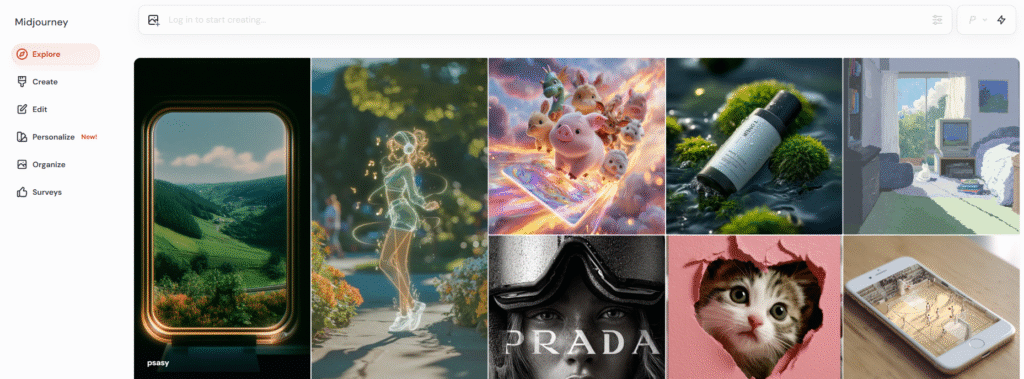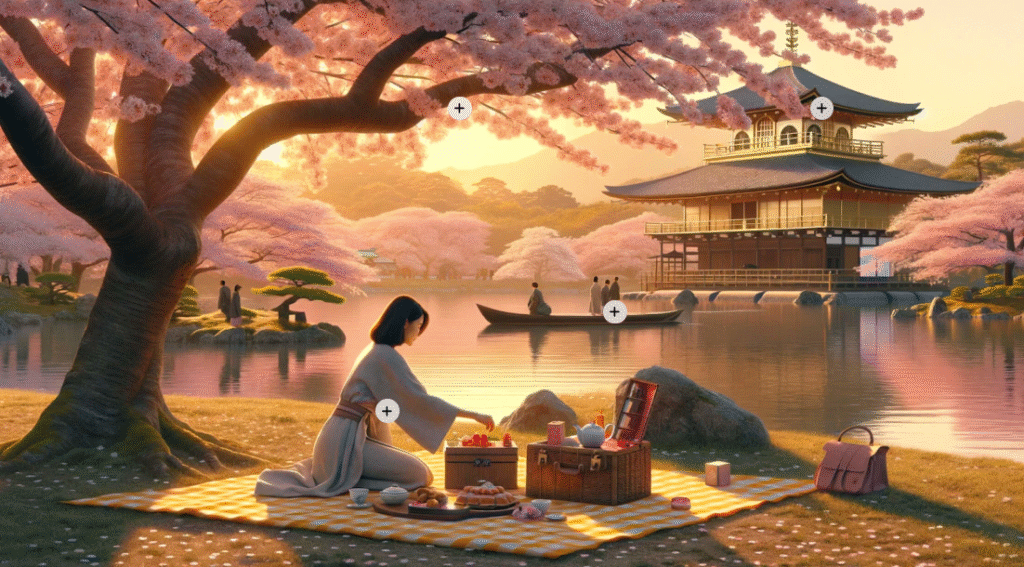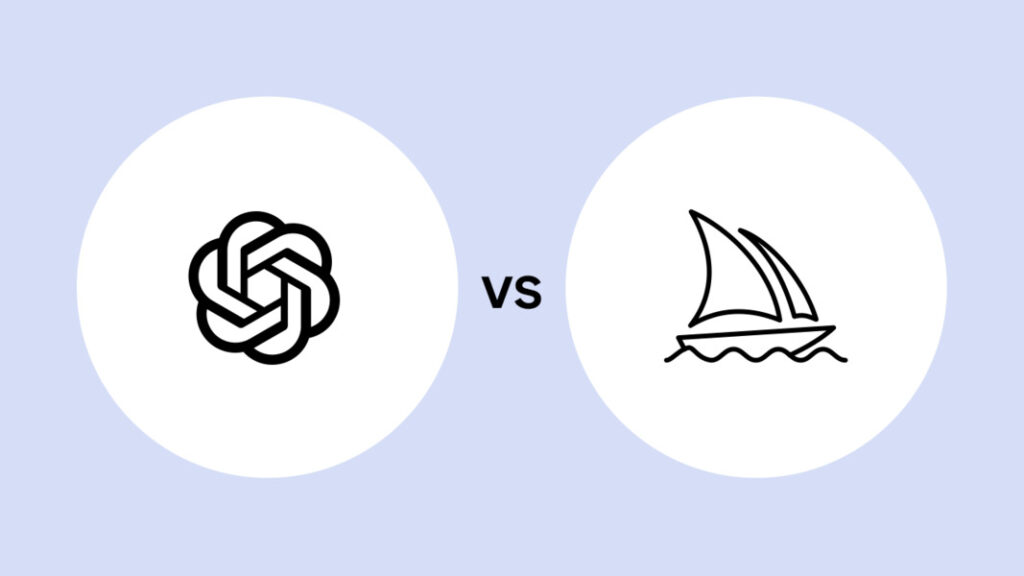AI art tools are evolving faster than ever, leaving many creators torn between two industry giants: Midjourney and DALL-E. Whether you’re a digital artist, marketer, or hobbyist, picking the right tool can feel overwhelming—especially when both platforms keep rolling out impressive updates.
Midjourney’s V7 model, released in April 2025, raised the bar for photorealism and artistic control. Meanwhile, DALL-E 3, backed by OpenAI, remains a fan favorite thanks to its ChatGPT integration and free access via Bing Image Creator. But which one truly fits your creative workflow?
In this Midjourney vs DALL-E showdown, we’ll break down their strengths, weaknesses, and ideal use cases—so you can make an informed choice without the guesswork.
What is Midjourney?

Imagine an AI image generator that consistently produces visuals so captivating, they make you question reality. That’s Midjourney. Launched in 2022, this platform quickly became a sensation, initially through Discord, transforming text prompts into high-fidelity images that often leave professional artists in awe. It’s the kind of tool that headlines conversations about the future of digital art, known for its dazzling output and incredible artistic range.
While Midjourney started as a Discord-exclusive, it rolled out a user-friendly web interface in 2024, significantly lowering the barrier to entry for newcomers.
This evolution means you no longer need to master complex Discord commands to get started, making it more accessible without compromising the powerful capabilities that seasoned professionals have come to rely on.
Key Features of Midjourney
- Consistent Quality Across Diverse Styles: Its V7 model pushes the boundaries of detail, rendering individual strands of hair, rich fabric textures, and lighting effects with a realism that rivals professional photography.
- Granular Stylization Control: This tool provides unparalleled control over artistic styles. You can effortlessly incorporate specific art movements or artists into your prompts, like “Van Gogh” or “cyberpunk,” or delve deeper with advanced style parameters.
- Stealth Mode for Confidential Projects: Protecting your creative work is paramount, especially when dealing with sensitive projects.
- Intuitive Blend Command: Midjourney’s blend tool takes image manipulation to a new level, allowing you to seamlessly merge 2-5 images into something entirely novel.
Pros of Midjourney
- Outputs That Consistently Impress: If “professional-grade” is your benchmark, Midjourney is likely your top contender. Its generated images are not only consistently detailed and highly stylized but also frequently production-ready, often requiring minimal post-processing.
- Robust Privacy Features: The inclusion of Stealth Mode is a significant advantage for users who prioritize confidentiality.
- A Thriving, Supportive Community: The Midjourney Discord server is more than just a forum; it’s a vibrant ecosystem.
Cons of Midjourney
- Steep Learning Curve for Prompt Engineering: To truly unlock Midjourney’s potential, basic prompts won’t cut it. Achieving masterpieces requires a nuanced understanding of “prompt engineering.” New users often need to invest time in learning how to craft detailed and specific instructions, incorporating elements like lighting cues, camera angles, artistic movements, and even negative prompts to guide the AI effectively.
- Subscription-Based Access: Unlike some competitors, Midjourney does not offer a free tier for casual exploration. It operates on a subscription-only model, with plans typically starting at around $10 per month.
- Vague Copyright Terms: The legal intricacies surrounding AI-generated art are still evolving, and Midjourney’s terms of service can be somewhat ambiguous regarding copyright protection, particularly for commercial use.
What is DALL-E?

While Midjourney might be the stadium rockstar, DALL-E is the versatile indie artist, charming audiences in more intimate venues. Developed by OpenAI, the same innovative minds behind ChatGPT, DALL-E first made headlines in 2021 for its groundbreaking ability to translate even the most whimsical text prompts into surprisingly coherent and often delightful images.
Now in its third iteration, DALL-E 3, it has only grown more sophisticated and user-friendly, setting it apart in the Midjourney vs DALL-E conversation.
What truly distinguishes DALL-E is its unparalleled accessibility. It can be seamlessly integrated and used directly within ChatGPT, leveraged for free via Bing Image Creator, or even accessed conveniently on your mobile device. This multi-platform availability means no complicated setup or steep learning curve is required to start creating, making it an ideal choice for a broad spectrum of users, from casual explorers to busy professionals.
Key Features of DALL-E
- Conversational AI for Intuitive Creation: DALL-E 3’s integration with ChatGPT is a revolutionary feature. Instead of simply typing a single, isolated prompt, you can engage in a natural, iterative conversation with the AI.
- Extensive Multi-Platform Accessibility: DALL-E offers remarkable flexibility in how and where you can create. Whether you’re working from your laptop, generating ideas on your smartphone during a commute, or even integrating its capabilities into your own custom applications via OpenAI’s API, DALL-E is readily available.
- Precise Inpainting for Seamless Edits: Ever generated an image that’s nearly perfect but has one minor flaw? DALL-E’s inpainting feature is designed to fix just that. This powerful tool allows you to target and modify specific areas within an existing image without needing to regenerate the entire picture from scratch.
- Indemnification for Enterprise Users: For businesses, navigating the legal complexities of AI-generated content can be a major concern. OpenAI addresses this directly by offering indemnification for DALL-E enterprise users.
Pros of DALL-E
- Exceptional User-Friendliness: DALL-E excels in its simplicity, making it incredibly approachable for users regardless of their prior experience with AI tools.
- Accessible Free Version: Through Bing Image Creator, powered by DALL-E, users can access free credits to experiment with image generation without any financial commitment. This free tier is invaluable for casual users, students, or anyone on a budget who wants to explore AI art capabilities before considering a paid subscription.
- Unrivaled Mobile Access: The ability to generate images on a mobile device is a significant advantage for content creators and professionals who need to maintain productivity on the go.
Cons of DALL-E
- Inconsistent Output Quality: While DALL-E can produce stunning images, its consistency can be a bit of a gamble. A prompt that delivered flawless results yesterday might yield a quirky or slightly off-kilter image today.
- Limited Stylization Control: Compared to Midjourney, DALL-E offers less granular control over specific artistic styles and parameters.
- Strict Content Moderation Policies: OpenAI maintains fairly stringent content moderation policies.
Midjourney vs DALL-E: Detailed Comparison
Now that we’ve introduced these two powerful contenders, let’s put them head-to-head in key performance categories.
Speed and Performance
When you’re up against deadlines, image generation speed is crucial. We tested both tools by prompting them to create “a sad cat wearing a tiny raincoat.” Midjourney proved significantly faster, consistently producing four high-quality images before DALL-E finished one.
This speed advantage in Midjourney is likely due to DALL-E’s more rigorous content moderation, which adds processing time. For mass-producing images or rapid iterations, Midjourney is clearly the winner.
Text Rendering
Many AI image generators struggle with legible text, often producing garbled letters. Midjourney still faces this challenge, making it difficult to get clear text in its images. DALL-E, however, is a text wizard, consistently rendering clean, readable words within its images.
This ability is a clear superpower for DALL-E, making it the undeniable winner for tasks requiring legible text in visuals, such as banners, book covers, or social media graphics.
Aspect Ratios
Precise control over aspect ratios is crucial for different platforms like Instagram Stories or YouTube thumbnails. Midjourney offers effortless and precise aspect ratio adjustments using simple prompt commands like “–ar 16:9,” ensuring you get exact dimensions.
DALL-E, by default, outputs square images, and while it can attempt custom ratios, the results are often inconsistent and may require multiple regenerations. For accurate and flexible aspect ratio control, Midjourney is the superior choice.
Use Cases
Choosing between Midjourney vs DALL-E isn’t about universal superiority, but rather which tool fits your specific workflow. Midjourney is ideal for artists, designers, and creative professionals seeking stunning, highly stylized, and intricate art with granular control, perfect for confidential client projects.
DALL-E shines for marketers, educators, and casual users who need simplicity, quick functional results, or images incorporating text. Its conversational AI through ChatGPT is excellent for brainstorming realistic scenes or clear educational diagrams.
Privacy and Ownership
Both tools grant you ownership of your creations, but with differences. Midjourney allows personal and commercial use, though its public gallery is on by default (requiring Stealth Mode for privacy).
DALL-E also grants ownership, but OpenAI reserves the right to use your images for model improvement. Crucially, DALL-E offers indemnification for enterprise users, covering legal costs in case of copyright disputes related to AI-generated images. This provides significant legal peace of mind for businesses.
Final Words on Midjourney vs DALL-E
Choose Midjourney if you…
- Need museum-quality art with full style control.
- Work on private projects (thanks to Stealth Mode).
- Don’t mind learning advanced prompting.
Choose DALL-E if you…
- Want a free, easy-to-use tool for quick graphics.
- Frequently need images with text (e.g., ads, memes).
- Use ChatGPT and value seamless integration.
Both tools are game-changers—your choice depends on what you create. Now, go make something amazing!



